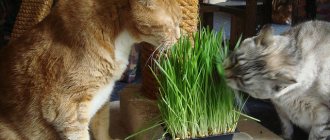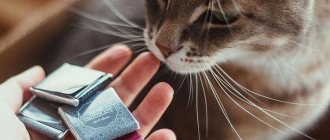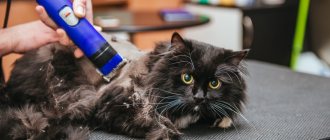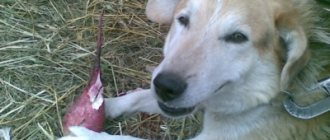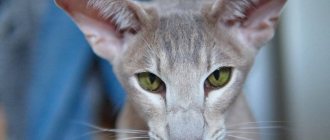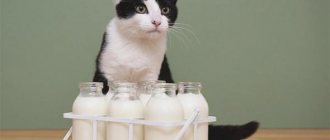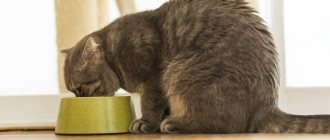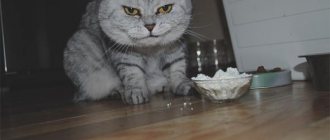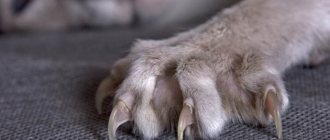History of the profession
The first mention of felinology can be dated back to the end of the 19th century. On July 13, 1871, the world's first cat exhibition took place in London, organized by animal artist Grayson Weir. 170 cats of various breeds took part in it, and Weir himself was among the judges. This event marked the beginning of the emergence of the first breed standards. Then communities of cat lovers began to appear throughout the UK, and later throughout the world. In 1887, the world's first club for lovers of these animals, called the National cat club, was organized. It still exists today. In 1910, the felinological association of clubs GCCF (Governing Council of the Cat Fancy) appeared.
In 2002, for the first time in Russia, the opportunity arose to officially obtain higher education in the field of felinology at the Moscow Agricultural Academy named after. K. A. Timiryazeva.
Hobby or profession?
Let's figure out what their occupation is for felinologists: a hobby or a job.
From a generally accepted point of view, a profession is what a person does during his main working hours, and a hobby is an interest in his free time. A profession brings income, but a hobby requires financial investment. Professional pursuits require effort, in some ways even forcing yourself, in order to achieve some success. A hobby is for the soul, and, as a rule, a person does not strive to achieve any heights on purpose, everything turns out by itself.
Did you know? Iodine was invented thanks to a cat who jumped on a table and knocked over test tubes. Animal scientists conduct research during working hours and receive a salary for this. To become a livestock specialist, you need to study at a university for 5 years. To conduct research you need good laboratory equipment, which cannot be purchased with personal savings. Based on this, a livestock specialist is a profession.
If we consider breeders, caring for and breeding cats requires not only working time, but also non-working time.
Selling purebred kittens brings real money, but for this you need to want to buy kittens for that kind of money. This means investing money in a purebred mom and dad, feeding them with expensive food and vitamins, washing them with expensive shampoos, vaccinating them, taking them to the veterinarian, filling out documents, taking them to exhibitions, paying fees, and receiving awards. To these expenses you need to add the possible birth of rejected kittens, their death, and the death of the cat.
To register a nursery, you need to run around with paperwork and complete courses. At the same time, we can say that a person who does not like cats will not be able to pay so much attention to them and spend money on them. Therefore, being a breeder is both a hobby and a profession at the same time.
The expert has working hours during which he evaluates cats, for which he receives a salary and has the opportunity to travel around the world for free. To become an expert, a person has to study for a long time, study the intricacies of breed standards.
At the same time, the man was a breeder for a long time, devoting both working and non-working time to breeding, he invested a lot of money and effort in his training, he simply cannot help but love cats. This means that an expert combines both a profession and a hobby.
Important! Felinologist is a profession that requires a creative approach, passion, financial expenses and complete immersion in the matter. So, there are people who have turned the love of cats into a separate science that studies them, and we found out what it is called. Felinology is a special branch of science
. If you want to do it, you need to truly love cats, understand your responsibility to them, have a desire to develop in terms of accumulating knowledge, and develop memory. To become a felinologist, you need to turn your hobby into a profession.
Domesticated themselves
If you've ever seen a wild cat, then you know that this is a real lone predator who is unlikely to be happy with attempts to cuddle it. For example, they say about the Pallas's cat that you can stroke it only twice - with your right hand and your left hand. And yet, today many cats live side by side with a person, bring him prey and are not at all averse to purring while sitting on his lap. How did this happen?
Since cats are extremely independent animals, they did everything themselves. And of course, not just like that, but for their own benefit. When man began farming in the Fertile Crescent region about 10 thousand years ago, he began to need storage facilities for grain. Barns have proven to be extremely attractive to mice and rats as a source of food.
The abundance of rodents gathered in one place, in turn, seemed tempting to the cats. However, they faced a real dilemma. By nature, these animals do not tend to unite in packs, with the only exception being lions. This is partly due to their appetites: the size of a cat's prey is too small for even two individuals to share, and in the wild, cats can eat up to 10 small meals per day. Cooperation is simply not profitable for them.
Nevertheless, thanks to human activity, there were enough rodents for everyone, and cats changed their behavior from competition to cooperation. This does not mean that they have learned to live in friendly groups (scientists note It is almost impossible to herd cats, thanks to evolution, that cats even today do not see much benefit in uniting), but they still learned to get along.
Neighborhood with each other served as the first step towards the domestication of the pets so familiar to us today.
Gradually, the animals got used to the person, who subsequently took a liking to them and even began to encourage their presence near the settlements - after all, cats helped get rid of pests.
A major genetic study, The palaeogenetics of cat dispersal in the ancient world, of more than 200 representatives of the species, including the remains of cats that lived in Ancient Rome, Egyptian mummies and African steppe cats, showed that cats spread throughout the world in two large waves. The first swept the Fertile Crescent and its surroundings: domestic cats, along with farmers, spread from Anatolia throughout the Middle East.
Several thousand years later, the second wave, emerging from Egypt, covered almost all of Europe and North Africa. The real heyday of the “cat empire” occurred in classical Antiquity, when cats moved along with humans along the Mediterranean trade routes.
It is important to note that the relationship between a person and a cat for a long time developed on the basis of mutual benefit; people were of little interest in the external attractiveness of these animals.
This is evidenced by Striped cats originated in the Ottoman Empire, a new genetic study says the later appearance of the striped color often found in domestic cats today. Tabby cats appeared The Ascent of Cat Breeds: Genetic Evaluations of Breeds and Worldwide Random Breed Populations in the Ottoman Empire in the 14th century, and became widespread in Europe only in the 19th century.
Around the same time, people began to breed individual breeds - most of them appeared in the last 150 years. What explains this? Again, the independence of cats. Unlike dogs, they are difficult to train and are reluctant to carry out tasks from people, so selecting them for certain characteristics did not make much sense.
Cat figurine. Ancient Anatolia (modern Turkey), 1600–1800 BC
Who studies cats?
As a professional activity, felinology has existed since the second half of the 19th century. It was during this period that communities of cat lovers began to appear in Great Britain, which later merged into a single organization, the Governing Council of the Cat Fancy (GCCF), focused on exhibition activities and standardization of animal breeds. Solving the problems facing the club members required specific knowledge. This is how felinologists appeared - specialists with a narrow focus who study such aspects of working with cats as:
- animal breeding;
- selection;
- development of products for pets (food, cosmetics, safe toys, etc.);
- supervision of factory circles and events held by them (exhibitions, etc.);
- training future colleagues - experts in the considered areas of activity.
Regardless of their profile, such specialists united in special organizations. Among the most respected felinological societies around the world, functioning to this day, are:
- The Governing Council of the Cat Fancy (GCCF);
- Federation International Feline (FIFe);
- World Cat Federation (WCF);
- The Cat Fanciers Association (CFA);
- The Cat Fanciers Federation (CFF);
- The International Cat Association (TICA);
- International Felinological Association (IFA) registered in Russia;
- International Cat Union (ICU);
- World Association of Cat Clubs (WACC);
- Alliance SuperCats (ASC).
Today, the tasks facing the participants of these clubs are somewhat different from those that were solved by representatives of this unusual profession 100 years ago. What are felinologists working on these days?
Cat lovers of all countries – unite! Part I
Cat lovers, let’s unite and be friends, but not “against” but “for”.
“In force”, not “in spite of”. Felinology (felinus) is the science of cats, studying domestic cats (anatomy and physiology) and their breeds, as well as selection issues, breeding and maintenance features.
The world's first cat lovers club, the National Cat Club, was registered in 1887 by Harrison Weir, who also became its president. On July 17, 1871, Harrison Weir organized the first specialized exhibition of purebred cats. Thanks to this exhibition, the first cat breed standards appeared. Then other similar clubs were created in England, now they are united in the British organization of cat lovers GCCF (Governing Council Cat Fancy), which has more than 50 regional clubs.
Cat lovers' clubs quickly gained popularity and appreciation and spread throughout the American continent. In 1906, the American Cat Association CFA (Cat Fanciers Association) appeared, which united more than 300 clubs. In 1922, the club appeared in Germany in the city of Nuremberg, and in 1926, the Paris Cat Lovers Club was organized in France.
World felinological organizations and associations of cat lovers differ significantly from each other, but they have the same goal - the development and improvement of standards for cat breeds and colors; establishing a system for holding exhibitions and requirements for their organization; control of the work of nurseries and cat clubs.
All modern felinological organizations can be divided into those working according to the European and American judging systems.
The European felinological system, as a rule, unites clubs of cat lovers. Judging according to the European system is closed; experts evaluating animals are in a separate room, where cat owners are not allowed. Spectators also cannot be present during the sacrament of judging! After the examination, the owners of the participating cats are given evaluation sheets signed by the judges.
The Americans came up with their own cat rating system, which, of course, differs significantly from the European one. The American felinological system directly unites the owners of nurseries. The Americans organize a whole show, a performance, gather a large number of spectators and evaluate the cats. The judge can directly during the exhibition point out the breed conformity or, conversely, shortcomings, focusing on the breed and color standard. As a rule, no one signs any assessment sheets.
Many of the world's largest felinological organizations meet twice a year at the World Cats Congress (WCC) to agree on general provisions without changing their own policies or invading others.
At the moment, there are the following widespread felinological organizations in the world, which are the most popular and enjoy undeniable authority among felinologists around the world:
WCF - World Cat Federation, World Federation of Cat Fanciers.
This is the largest felinological organization in the world, which today has more than 540 clubs from 18 countries. WCF was created in 1988 by Anneliese Hackman, who is its president. The main office of the federation is located in Germany in the city of Essen, and there are member organizations in Russia, Ukraine, Belarus, Germany, Italy, Poland and many other countries. This organization is the most popular in Russia.
Judging in the WCF takes place according to the European style. The system for winning titles at WCF exhibitions is quite complex. To obtain them, the owner and his pet have to travel a lot not only to cities, but also to other countries. For example, to obtain the title of world champion, you must achieve three top marks in two different continents or parts of the world. The final “BestinShow” competitions held by the federation are held openly and are extremely popular.
FIFe- Federation International Feline, International Felinological Organization.
It was founded by Marguerite Ravel (France) in 1949 and was first called the United Nations Organization of the Cat Fancy. This organization includes owners and breeders of purebred cats from more than 27 countries. The main task of the newly created association was to regulate and stabilize spontaneous breeding of cats, streamline breeds and their standards, create uniform rules regarding exhibitions, names of nurseries, and training of judges. In the same 1949, the first cat exhibition took place, where about 200 animals arrived from around the world. Nowadays, up to 1.5 thousand purebred cats perform at the World Exhibitions held once a year!
In 1981, the organization was registered in Geneva under its current name, Federation Internationale Feline (FIFe). Now its main office is located in Luxembourg.
The main legislative body of the organization, the General Assembly, was created on December 10, 1950 in Belgium. The Assembly developed and established the Charter and Rules of the organization, which can be changed and finalized at the annual meetings of the Assembly. The FIFe structure guarantees equal rights for all its members. Currently, FIFe unites in its ranks all countries of Europe (with the exception of Ireland), Asia and South America. According to FIFe rules, only one club or association can represent a FIFe member country.
CFA - The Cat Fanciers Association, Cat Fanciers Association.
This organization was created in the USA in 1906, but was officially registered only in 1919. The CFA includes clubs located in the USA, Canada and several other countries. In this organization (as in FIFe), the rule is one country - one club (or association of clubs).
All cats participating in CFA shows are entered into a computer program, which forms a single file of pedigrees and exhibition results; all CFA judges are licensed. Judging takes place according to the American felinological system: openly and does not involve any descriptions.
CFA is famous for the exceptional representatives of its recognized breeds, the list of which is very organic. Registration of cats is carried out according to strict rules, therefore it guarantees the absolute purity of the breed. This is the largest registry of pedigree cats in the United States.
What does felinology do, why is this section of zoology called that?
Why is the field of zoology that deals with the study of cats called felinology? This word comes from the Latin root "felinus". Combined with the widely used ancient Greek "λόγος", it is literally translated into Russian as "cat science".
It was difficult to find a more precise definition for the name of the direction, which studies the physiology of cats, develops optimal conditions for keeping them, as well as standardizes breeds (including breeding new ones and improving existing ones).
Modern felinological science covers even more types of activities directly related to breeding and caring for domestic felines. This may include:
- organizing and holding cat shows;
- creation and registration of nurseries for breeding purebred animals;
- exercising supervision over all of the above areas.
Like any scientific activity, felinology should be carried out by specialists with appropriate specialized education. What are such people called and what areas of cat life are within their competence?
Variety of felinology profiles
Despite the fact that all felinologists study cats and have knowledge in the field of zoology and selection, there is a clear structure of profiles among specialists:
- Felinologist-zootechnician. A specialist who graduated from an agricultural or agricultural university. He can work in cat clubs, but most often he does research in special laboratories and scientific institutes.
- Breeder-felinologist. A person who has a certificate of completion of full-time or correspondence courses in felinology. The received document makes it possible to open your own nursery and engage in breeding of cats of one or more breeds.
- Expert felinologist. Felinologist breeder who has completed many courses and seminars. Can conduct examinations, act as a judge at cat shows and give them grades.
Anyone who decides to engage in this science must receive an appropriate education.
Where do they learn to become a felinoglogist? How to become a felinologist?
1) felinologist-zootechnician
This is a person with a higher education received at a university with an agricultural or agricultural focus. Such specialists can theoretically work in cat lovers' clubs, but most often they engage in research in various scientific institutes and laboratories.
2) breeder-felinologist
A breeder-felinologist usually does not have a higher education in the specialty “felinologist”; instead, the breeder has a certificate of completion of courses in felinology (full-time or correspondence). This certificate gives you the right to open your own nursery. A felinologist breeder is engaged in the breeding of cats of a certain breed or several breeds.
3) expert fenlinologist
As a rule, felinologist experts grow out of felinologist breeders. To become an expert you need to study for quite a long time, attending various courses and seminars. An expert felinologist examines (judges) cats at exhibitions. Namely, he gives grades to breeding animals.
Features of the profession
Felinology is a science that studies the physiology, anatomy of domestic cats, their behavior, as well as the nuances of breeding and keeping.
A specialist in this field, usually either a club owner or an expert at a show, sometimes these are professional cat breeders. The animal care industry cannot do without felinologists. Developers of food, pet products and medicines also belong to this profession.
The main tasks that felinologists solve when uniting in associations:
The most famous world associations:
The 12 largest organizations operate at the global level. Some of them adhere to the European grading system, and some to the American one. The European system is more closed, the judge fills out the assessment sheet without witnesses, in a separate room. American is a show where the audience is present, and the judge evaluates openly.
Interesting! Cat shows are held not only among purebred animals, but also among outbred ones. In this case, the external beauty of pets, their character, and harmonious build are assessed. Each criterion is assessed in points, and the participant who scores the maximum number wins.
The depth of knowledge that felinologists require to perform their functions suggests that this is not a hobby, but a real profession. But where are domestic cat specialists trained?
Where are specialists trained?
A specialist with a higher education can apply himself as an animal engineer in a laboratory, a judge at a competition, manage a nursery or club, or give consultations. Without a higher education, a person who deeply studies domestic cats most often becomes a professional breeder. After the courses they work in a nursery.
The salaries of specialists vary from 20 to 80 thousand rubles on average. It depends on the place of work and level of education. Often people engage in felinology as a hobby and are employed in other places.
Several universities teach professions in Russia, for example:
Feline clubs conduct courses and seminars. You can obtain a certificate in the following institutions:
Some organizations offer year-round correspondence courses for beginners.
Who else studies cats?
Another specialist in the behavior of animals, including domestic cats, is called a zoopsychologist. A professional in this field understands how mental processes occur in an animal, how it perceives the world around it, and how its intelligence develops.
Often, the services of an animal psychologist are used when they want to find out the nature of an anomaly in an animal’s behavior: aggression, fear. After all, the reasons for this can be both diseases of the nervous system and a reaction to stress. An animal psychologist is able to understand a situation that the owner is powerless to understand.
Such specialists deal not only with domestic animals, but also with wild animals. They work in scientific laboratories, clubs, and provide private consultations.
To learn a profession, you can enroll in a university, for example, the Agricultural Academy named after. Timiryazev, or another institution where psychology is taught, as a rule, there is also a separate department of zoopsychology. At Moscow State University, at the Faculty of Psychology, there is a laboratory of zoopsychology. Not only practical research is conducted, but lectures are also given to students.
The cat world gives us so much joy and warmth in our daily lives. This post invites you to take a look at some interesting facts about these beautiful inhabitants.
1. Cats can't taste sweets.
It turns out that it's all about a defective taste receptor gene. Cats simply do not know what sweet is; they cannot taste it. Molecular analysis shows that big cats also have this defective gene, and it is likely that it helped shape the development of their carnivorous behavior.
2. Why do cats rub against people?
You've probably noticed that cats love to rub against humans. They do this not at all out of love for the owner. In this way, cats eliminate the smell of others from the glands that are located at the base of the tail and in the area between the eyes and ears. Also to mark them as your territory.
3. Cat brain
A cat's brain is similar to a human's. The same areas are responsible for emotions in cats as in humans.
We suggest you read: What to feed a cat for constipation, list of healthy foods
4. Cats are the best medicine
Cats are famous home healers. According to scientists, it is enough to stroke your pet to lower blood pressure and calm down. Therefore, in a house where cats live, stress is easier to bear, and the family becomes more harmonious and friendly. When we pet a cat, our heart rate and blood pressure decrease. And people with heart disease are more likely to live longer if they have a cat than those who don't have a cat or dog.
5. Cats are the laziest mammals. They sleep 16 hours a day. That is, about 70% of your life.
6. Cats are unique animals
They are 14 times better than humans at perceiving odors and can hear sounds at a frequency of 60 kHz. For comparison: people - 20 kHz, dogs - 40 kHz. A cat can hear sounds in the ultrasonic range, and its “ambush” near a mouse hole makes sense, even if the rodents do not move. Rodents communicate using ultrasound, and the cat overhears these conversations.
7. The length of the largest cat is 1.2319 meters
Among the representatives of large cat breeds, the largest is the Maine Coon. The body length of an adult cat often reaches 1 meter in length, and the weight of males is 6-9 kg. This weight is not the result of overfeeding or overeating. The Maine Coon's body is strong, broad-boned and muscular, ending in a long, bushy tail.
Some people are shocked, if not horrified, by the appearance of Maine Coons. But behind the formidable appearance lies a friendly, flexible character. It is for all these qualities that people fell in love with Maine Coons. But representatives of this breed are not carbon copies, and, of course, there are cats with different colors and builds, and sometimes with particularly outstanding sizes.
8. Cat's nose
To understand and study the world, nature has endowed cats with a very precise and incredibly complex tool - the nose. Small, blind and deaf kittens unerringly find their mother's milk nipples, completely relying only on their sense of smell. Representatives of the cat family have eighty million olfactory cells for smell and sense even the faintest odors, while humans have only twenty million such cells and their sense of smell is fourteen times worse than that of cats.
9. Vibrissae
Vibrissae are large, sensitive (tactile) hairs in mammals that protrude above the surface of the coat. The scientific name of the whiskers is vibrissae, therefore they are often called simply vibrissae in Russian-language literature. The mustache really vibrates. A cat has an average of 12 movable whiskers on each side of its face.
There are a large number of nerve endings at the base of the whiskers, so the cat uses them to receive information about everything that surrounds it - about objects, about wind, about temperature, etc. If a cat's whiskers are removed, it may have poor spatial orientation, for example, difficulty hunting and generally feel insecure.
10. Do cats sweat?
Cats have several sweat glands, found in places such as their cheeks and lips, around their nipples, and between the pads of their paws.
11. A cat cannot climb a tree upside down due to the structure of its claws. In order to get down from the tree, she needs to retreat, walking backwards.
13. Cats hide when they are sick
Instinct tells the cat that when he is weak, he is easy prey for a predator, so during periods of illness, cats try to hide from possible dangers.
14. Cats can travel great distances to get home.
15. How old is your cat by human standards?
If your cat is 3 years old, this is equivalent to a human being 30 years old. If 8 years, then humanly – 50. If 14, then 72 human years. The average lifespan of a domestic cat is 15 years, while for wild cats it is from 3 to 5 years.
16. Washing
Frequent washing of a cat is explained not only by the cleanliness of the animal, but also by other purposes. In particular, in this way the cat licks from the fur the required amount of a substance containing vitamin B and necessary to regulate the animal’s mental balance. If the cat is not allowed to do this, it will become very nervous and may even die from stress.
17. The most ancient representatives of the cat family existed more than 50 million years ago
18. Aspirin is deadly for cats
19. Eyes in the dark
Under favorable conditions, a greenish cat's eye in the dark is visible at a distance of up to 80 meters due to the fact that cat's eyes reflect light so that some of the rays return along the same path along which they hit the eyes.
20. Binocular vision in cats
A cat's binocular vision covers 130 degrees (a dog's - 83). The cat is also able to observe everything that happens on the sides! Her visual field is 287 degrees compared to ours 200. The extremely flexible head rotates in all directions and allows you to maintain a direct gaze at all times.
21. Cats, like humans, can have blood type AB.
22. A cat's normal body temperature is 102 degrees Fahrenheit (38 Celsius)
23. A cat has five more vertebrae in its spine than a human.
24. Egyptians shaved their eyebrows as a sign of mourning when they lost their beloved cat.
25. The more you talk to cats, the more they talk to you.
26. If the pupils are dilated, despite bright lighting, the cat is very interested in something or is in a playful mood
https://www.youtube.com/watch?v=https:accounts.google.comServiceLogin
27. Cat fights are short, but very ferocious and cruel. Their main weapon in fights is their teeth.
28. When kittens are born, their eyes and ears are closed. When the eyes open, they are always blue at first. Then, over time, they change their color to a permanent one.
29. Scruff reflex
Under the skin of a kitten's scruff there are nerve endings that cause a specific behavior - the “neck reflex” - this is when the kitten's body relaxes, and its tail and paws are tucked towards its tummy so as not to get caught on anything while it is being transported.
30. They are really cool creatures
1. If your cat is tearing up furniture, try giving the area a lemon or orange scent. Cats hate these smells; 2. Never feed your cat dog food. The protein requirement of cats is 5 times greater than that of dogs; 3. If you add dry green tea leaves to your cat's litter box, you will get rid of the unpleasant odor; 4. Try to spend a couple of minutes morning and evening brushing your cat, and there will be much less cat hair in your house.
PS Take care and love cats!
What personal qualities should a felinologist have?
Love for animals, kindness and lack of allergies to wool are the key qualities necessary for a person who decides to become a felinologist. If they are available, you can move on to studying breeds and other features of the profession, which will require perseverance and determination. During the learning process, the advantage will be:
- good memory,
- ability to quickly master new knowledge,
- ability to work with large amounts of information.
It is known that even ordinary keeping of pets requires a lot of time and responsible attitude. For a specialist involved in breeding purebred cats, this requirement is doubly relevant. The breeder needs to be careful and pedantic, since cats need regular care, and maintaining order in the place where they are kept is a lot of work.
Observation, honesty, punctuality and the ability to analyze play a big role. These qualities are especially important for judges. In addition, during exhibitions you need to be able to find an approach to different people, so the specialist must be sociable and polite.
Who is a felinologist?
Felinologist (from Latin felinus - feline, logos - word, teaching) is a specialist who thoroughly understands the anatomy and physiology of domestic cats, knows all the features of breeds and their selection, and also breeds and cares for purebred cats.
Although cats have never been “new” to people, much attention has been paid to these pets since the 19th century. It was during this period that the active development of felinology as a science began. The primary task of felinology was to determine standards for various breeds, taking into account their anatomical features and behavior. These standards formed the basis for evaluating participants in the world's first exhibition, which took place in London in 1871. Its organizer, scientist Harrison Weir, later founded the National Cat Fanciers Club.
Felinology continued to develop at the beginning of the 20th century. The first felinologists were engaged in breeding new breeds, held exhibitions, and opened nurseries. During this period, the American Cat Association was founded, which included more than 300 clubs. Later, similar clubs appeared in Germany and France. By the middle of the century, there was a sharp decline in the activity of cat nurseries, which threatened the extinction of rare cat species. However, thanks to the efforts of dedicated felinologists, they were saved.
Although love for animals and the ability to care for them are very important factors, this is not enough to become a felinologist. Specialists invest a lot of energy in professional development, mastering new knowledge and skills. So, a felinologist must:
- know the basics of zoology;
- understand various cat breeds , including rare ones;
- know the anatomy and behavior of purebred animals;
- study and constantly update accepted standards for evaluating show cats.
The professional activity of a felinologist is determined by several areas:
- A breeder is an owner of a purebred cat with a good pedigree who breeds kittens for sale. Can also participate in exhibitions as an assistant judge or presenter.
- The head of the nursery is a specialist in breeding and selection of cats . In fact, the direction duplicates the work of the breeder, but on a larger scale.
- An expert – felinologist – is a specialist with higher education who understands the anatomy and behavior of cats and participates in laboratory research. If desired, he can teach courses, head a nursery, or open his own club.
- A judge is a specialist who evaluates cats at shows and knows all the current standards of the World Cat Federation (WCF). It is worth noting that without a license issued by WCF, it is impossible to occupy this position.
Depending on the position occupied in the hierarchy of felinologists, the specialist will have to perform the following functions:
- breed and sell purebred kittens;
- carry out grooming;
- prepare pets for participation in exhibitions;
- select the most “promising” animals for breeding;
- conduct laboratory research related to improving the living conditions of cats and their breeding;
- develop and test medicines, vitamin complexes, care products, feed, etc.;
- advise and train beginning breeders;
- create and maintain cat nurseries;
- participate in judicial commissions;
- assess the character and behavior of cats;
- identify and reject animals that do not meet established standards, etc.
Features of the profession
The profession of felinologist includes the following areas:
- The expert is considered a true expert on the physiology and behavioral characteristics of cats. Very often his help is required to select the most “promising” kitten.
- Breeders and nursery managers are specialists in animal breeding and selection. Most of them are owners of purebred pets.
- A judge is a professional who perfectly knows all current WCF standards.
Working as a felinologist involves business trips, holding business meetings, attending seminars and other events. A specialist has the right to work full-time or on a flexible schedule.
Many consider it a kind of paid hobby.
What should knowledge be?
A felinologist is not a synonym for a veterinarian. A specialist is not required to understand diseases, but he must know all breed standards approved by leading international cat associations.
His responsibilities include not only accurately determining whether an animal belongs to a particular variety, but also identifying the correct “breed” traits. In this area there are many external factors (color, paw length, head size and shape, height at the withers, ear structure, etc.) that determine the standards.
With such knowledge, felinologists are indispensable at competitions and at the stage of examining breeding kittens.
The salary of a specialist starts from 40-60 thousand rubles, and the upper limit, especially when working for a private employer, is not defined.
What personal qualities should a felinologist have?
Love for animals, kindness and lack of allergies to wool are the key qualities necessary for a person who decides to become a felinologist. If they are available, you can move on to studying breeds and other features of the profession, which will require perseverance and determination. During the learning process, the advantage will be:
- good memory,
- ability to quickly master new knowledge,
- ability to work with large amounts of information.
It is known that even ordinary keeping of pets requires a lot of time and responsible attitude. For a specialist involved in breeding purebred cats, this requirement is doubly relevant. The breeder needs to be careful and pedantic, since cats need regular care, and maintaining order in the place where they are kept is a lot of work.
Observation, honesty, punctuality and the ability to analyze play a big role. These qualities are especially important for judges. In addition, during exhibitions you need to be able to find an approach to different people, so the specialist must be sociable and polite.
What problems do felinologists solve?
All felinologists in the world today are united in two large associations - the American TICA and the European WCF. Although there are a lot of less significant and large organizations.
WCF includes amateur felinological clubs from different countries, regions, and cities. And they, in turn, regulate all issues of nurseries and breeders. At competitions, judging takes place in a closed format.
TICA is an association in which catteries are registered directly. And felinologist-judges evaluate animals in the rings, publicly making assessments and telling the audience about the merits and demerits of all pets participating in the show.
Felinology is studied in special courses; they can be organized by large associations, clubs, and private experienced felinologists. After completion, a specialist certificate is issued.
Advantages of the profession of felinologist
The profession of felinologist is chosen only by those who truly love their job. This is their main advantage. Good specialists are highly valued in narrow circles. People turn to them for consultations, which significantly increases their self-esteem. Recognition of the work of a felinologist is confirmed by diplomas and certificates received by their “wards” at exhibitions.
Victories at exhibitions also help increase earnings, since the value of a cat with a good pedigree increases significantly after receiving a diploma. The income of breeders largely depends on the breed chosen for breeding, the ability to promote their services and the number of animals in their care. On average, profit can be about 25-50 thousand rubles per month.
The profession is not limited by a strict work schedule (with the exception of experts working in laboratories), so it can be combined with the main job or taken on part-time jobs. An additional advantage will be the opportunity to travel around the world, taking part in international exhibitions.
Disadvantages of the felinologist profession
Caring for cats takes a lot of time and effort. Not every person is able to devote himself completely to working with animals. In addition, before a felinologist begins to earn money by breeding purebred animals, he will have to invest a lot in his business. Moreover, the amount of costs will depend on the rarity of the selected breed.
The felinologist does not have a wide field for action. The sales market in this direction is very specific and narrow. In addition, demand is not always proportional to supply. There is quite high competition among breeders. Fashion trends are also a factor in determining commercial success. While breeding one breed, a felinologist may “burn out” if the trend determining demand changes.
The main characteristics of the formed breed
The main features of the breed include:
- Common ancestry - all animals of a given breed descend from a limited number of ancestors, ideally from one common ancestor.
- Commonality of characteristics - animals represented in the same breed have similar physiological characteristics.
- The importance of the number of individuals - a breed can be considered as such when there is a sufficiently large population in which the possibility of inbreeding is excluded.
- The territorial distribution of a breed is the presence of breeding points for representatives of the breed in various places that differ in climatic, geographical and natural conditions.
- Breed constancy is stability in the inheritance of traits characteristic of a given breed.
READ What is the name of a black duck with a white beak?
What problems do felinologists solve?
All felinologists in the world today are united in two large associations - the American TICA and the European WCF. Although there are a lot of less significant and large organizations.
WCF includes amateur felinological clubs from different countries, regions, and cities. And they, in turn, regulate all issues of nurseries and breeders. At competitions, judging takes place in a closed format.
TICA is an association in which catteries are registered directly. And felinologist-judges evaluate animals in the rings, publicly making assessments and telling the audience about the merits and demerits of all pets participating in the show.
Felinology is studied in special courses; they can be organized by large associations, clubs, and private experienced felinologists. After completion, a specialist certificate is issued.
What should knowledge be?
A felinologist is not a synonym for a veterinarian. A specialist is not required to understand diseases, but he must know all breed standards approved by leading international cat associations.
His responsibilities include not only accurately determining whether an animal belongs to a particular variety, but also identifying the correct “breed” traits. In this area there are many external factors (color, paw length, head size and shape, height at the withers, ear structure, etc.) that determine the standards.
With such knowledge, felinologists are indispensable at competitions and at the stage of examining breeding kittens.
The salary of a specialist starts from 40-60 thousand rubles, and the upper limit, especially when working for a private employer, is not defined.
What does felinology study?
Contents hide
What does felinology study?
Felinology is an amazing science that can be useful not only for cat breeders and experts at exhibitions of various sizes, but also for all lovers of these beautiful animals.
How did our cats arise, what distinguishes them from each other, and what makes them similar, do they have common ancestors? Which breeds are close to each other, like Thais and Siamese, British and Scots, Persians and exotics, and which, on the contrary, are very distant, like the Sphynx and Neva Masquerade, Maine Coon and Munchkin? Which cat's character, depending on the properties of its breed, is right for you? Feline scientists answer such questions. They also breed many of the amazing breeds known to us today.
Serious study of the physiology, psychology and breed characteristics of cats dates back to the 19th century. In 1871, British scientist and animal artist Harrison Weir organized and held the world's first exhibition of cats of various breeds. It took place at the Crystal Palace in London. There were 160 entries in this competition, all of whom were judged on a standard later known as "show conformation." At the 1871 exhibition, the winner was an elderly British Shorthair cat of a classic blue color.
In 1887, Weir founded the National Cat Fanciers' Club, which served as an example for other researchers and owners of these animals. Several dozen clubs in the UK eventually united into a felinological association. The USA then took over the baton. In 1906, the American Cat Association appeared, which already included three hundred clubs. In the 1920s, similar organizations emerged in Germany and France. Associations of felinologists from different countries differed from each other in their methods of work, but pursued common goals - control over cat shows, the work of nurseries and clubs, the development and breeding of new breeds and colors without compromising the health of cats.
During the Second World War, all activities related to felinology were suspended, and some breeds were close to extinction. Fortunately, the dedication of fanciers and breeders has led to the restoration of breeding of these animals.
Of course, the profession of felinologist presupposes interest and love for our smaller brothers, a kind attitude towards cats and the ability to show patience (this is especially true for breeders and exhibition experts), as well as responsibility and a good memory. Beginning felinologists are actively engaged in self-education, get acquainted with the standards of cat fancier associations, and attend exhibitions - first as assistants.
The cat show is perhaps the main field of activity for felinologists. As a rule, this profession is performed by judges, their assistants and assistants. If cats are judged "in the ring", that is, outside the cages, owners and the public are allowed to observe the judging. Felinologists develop standards not only in relation to the pet’s appearance, but also pay attention to the animal’s temperament. How a cat performs in a competition can be the deciding factor in determining the champion.
Thanks to the work of felinologists, there are a lot of artificially created cat breeds. These include, for example, the Bengal - a descendant of the domestic Murka and the Asian leopard cat, the Chausie - the result of crossing the Abyssinian cat and the wild African lynx, the Toyger - a “mini-copy” of the tiger, bred in 1993 in the USA in order to attract public attention to problems of large wild cats.
In recent years, the question of the ethics of breeding a particular breed has been increasingly raised. The most striking example around which discussions flared up was the elf - a cat that combined the features of a sphinx (lack of hair, characteristic folds on the skin), a munchkin (short legs) and an American curl (concave ears). Supporters of natural breeds ask the question: is it even worth creating a breed that is so different in appearance from ordinary cats? Does this mean that pets that correspond to the “classical” idea of cats have become uninteresting to potential owners? Finally, experts are also concerned about another aspect of the problem: aren’t such games with genetics dangerous, turning cats into helpless creatures incapable of life without constant human care and constant monitoring of their health? Points of view are divided, but felinologists mostly believe that the emergence of new breeds has a positive effect on the development of cat science. The creation of such exotic breeds as the elf maintains people’s interest in these beautiful animals and is under the strict control of specialists, because the vast majority of felinologists sincerely love their charges, have all the necessary knowledge in the field of veterinary medicine and genetics, and therefore are guided by the principle “do no harm.” .
What if you are not interested in exhibitions, do not intend to participate in competitions with your pet and do not plan to open a nursery? Felinology can be useful even in this case. Firstly, thanks to a thorough study of the properties of breeds, these days you can choose a pet that is right for you. Hypoallergenic breeds are also largely the result of the work of felinologists. Secondly, this also applies to cat temperament: despite the fact that each animal has a unique character, two British cats are likely to be more similar to each other than a British cat and a Maine Coon. Breeders try to preserve and consolidate the best character traits of their pets, so that every cat lover can find a friend to their liking - calm or active, independent or friendly, affectionate or restrained in emotions.
Types of felinologists
The most famous, widespread and authoritative felinological organizations are the World Federation of Cat Fanciers - WCF (World Cat Federation) and the International Feline Organization - FIFe (Federation International Feline). Representatives of these associations meet twice a year at the World Felinological Congress to approve or change general provisions.
A felinologist is a specialist who deals with domestic cats; he is the one who researches, evaluates, evaluates and, before doing this, receives a special education.
Livestock specialist
The profession of livestock specialist in the broad sense of the word involves the development and control of conditions for keeping livestock in order to increase their productivity. Zootechnician-felinologist develops:
- new types of cat food;
- vitamin complexes for cats;
- various products related to caring for cats;
- carries out research work related to breeding cats and improving their living conditions.
Important! In order to work as a livestock specialist, you need to obtain a higher education.
Breeder
A felinologist-breeder is a specialist in breeding cats. This includes cat nursery owners who specialize in breeding one or more cat breeds. They can also become owners of purebred cats.
The difference between a breeder and ordinary owners of purebred cats is registration: breeders have special documents confirming their pedigree, registration with the Federation of Felinologists, and permission to reproduce. Breeders do not breed their cats with just anyone and will not sell a kitten without getting to know the future owner properly.
We advise you to find out why cats purr and meow
A higher education is not necessary for this; it is enough to complete the courses.
Expert
An expert felinologist is basically a former cat breeder who has additionally studied a lot and for a long time in special courses, studying the breed standards in great detail. Having received the appropriate documents, these people become judges at cat shows. It is not necessary for an expert, like a breeder, to graduate from a higher educational institution.
Important! The first place for a felinologist should be love for cats, a kind attitude and a desire to provide them with the best conditions.
Expenses of experts associated with the exhibition are paid by those who organized it.
Where is felinological knowledge used?
Now, while receiving a felinological education, a student acquires general knowledge in zoology, breeding, etc. However, at the same time, he also masters a narrow specialization. In modern “cat science” there are several main directions. So, a felinologist can become:
- Livestock specialist. He studies issues of physiology and selection of cats in a specialized scientific institute or laboratory. At the same time, he can give practical advice on keeping and breeding animals.
- Breeder. A specialist with the appropriate education has the right not only to breed purebred animals on his territory, but also to officially establish a nursery for rare cats.
- An expert. These high-class professionals are mainly involved in evaluating participants at cat shows.
It is worth noting that each of the listed specialties requires a different level of education. How to get this or that specific profession?
Training to become a felinologist
Suitable educational institutions for receiving relevant education:
- RGAU-MSHA named after K.A. Timiryazev.
- Tver State Agricultural Academy.
- Transbaikal Agrarian Institute is a branch of the Irkutsk State Agrarian University named after A.A. Yezhevsky.
- Moscow State University.
There are also numerous courses for felinologists to study additional features of cats.
How to become a felinologist?
The first university providing official felinological education in Russia appeared in 2002. The corresponding department was opened at the Moscow Agricultural Academy named after K. A. Timiryazev.
By 2020, the number of specialized educational institutions in this area has increased significantly. Today, “credentials” as a felinologist specialist can be obtained at almost any agricultural or agricultural university in the country. A graduate of such a university officially becomes a cat breeder. You will have to spend only 5 years on this.
To become a professional breeder, by today's standards, you don't even need such a diploma. You can legally open your own nursery by receiving just a certificate indicating that its bearer has completed a full-time or correspondence course in this specialty.
It is more difficult to acquire the status of a felinologist-expert. In addition to taking the usual courses for breeders, those who want to become such a specialist will have to regularly attend relevant seminars to improve their skills.
Here, many may have a logical question: isn’t keeping and breeding cats, even purebred ones, just a pleasant hobby? Why invest so many resources - time and finances - into getting an education in a field that is essentially just a hobby, but not a full-fledged profession?
It is impossible to answer this question unequivocally. Felinology as a field of activity requires such a specific combination of professionalism and personal involvement in the process that it is very difficult to compare it with any other work.
On the one hand, animal specialists and experts who evaluate cats work according to a schedule and have a fixed salary. Professional breeders can even feel like businessmen, receiving a good income from the sale of raised animals. On the other hand, the listed areas of activity require the investment of such an amount of personal time and finances that it is simply impossible to do something like this without a living passion and interest.
In short, a felinologist is a very promising and highly paid specialty at the moment. However, only those who really care about cats and are ready to devote their entire lives to caring for these animals should get an education in this profile.
Feline instructor
This qualification is needed to become a breeder, open a cattery and breed purebred cats.
If you love cats, work from home or have the opportunity not to work, and are willing to devote all your time to cats, then perhaps you will enjoy being a breeder.
But it is worth noting that such a profession does not bring significant income, rather the opposite. Pedigree cats require special care, which costs a lot of money.
First steps to become a felinologist instructor:
- Select the breed you want to train;
- Select a club for a given breed;
- Complete felinologist courses;
- Successfully pass the exam and receive a Certificate with the qualification “felinologist instructor”;
- Buy a cat kitten of the selected breed of breeding class;
- Register the nursery with a felinological organization.
- ... and then years of pleasure from constant communication with cats and raising kittens
Responsibilities
Felinologists are big cat lovers who have managed to turn their passion into their life’s work. The profession is represented in several areas: expert felinologists, breeders, nursery managers, judge felinologists.
An expert felinologist is a true cat expert. He can easily determine whether an animal belongs to a particular breed. A specialist is often approached to identify the most “promising” kitten from a breeding point of view.
To become a felinologist judge, you must obtain the appropriate license, which is issued after completing paid courses. The judge must have an excellent knowledge of the breed standards developed by the World Cat Federation (WCF). This document contains detailed information about the characteristics of the head, paws, neck, tail, body, coat and color. A point scale for evaluation with a detailed explanation is also given here.
Breeders and managers of nurseries are most often owners of purebred cats. These are specialists in breeding and selection of animals.
Is a felinologist a hobby or a profession?
Working as a felinologist requires a lot of investment, both moral and financial.
It is also important for a felinologist to be able to navigate the array of information about cats.
For example, an expert felinologist in charge of cat shows is familiar with many cat breeds. To do this, he receives a special license, which is issued to experienced breeders.
The peculiarity of the profession is that a separate license is required for a particular breed.
There is also a system where you can familiarize yourself with all the standards of cat breeds - World Cat Federation . You can get acquainted with the length of the paws, fur, head volume, structural features, etc.
Since the profession of a felinologist expert is not paid enough, in most cases it becomes additional work.
Modern associations of felinologists
The World Cat Federation (WCF) unites 370 organizations around the world. It develops breed standards, issues international-level judge certificates, and manages the international registration of nursery names.
There are also federations and associations:
- FIFe (Federation International Feline);
- CFA (The Cat Fanciers Association);
- ASSOLUX International;
- CFF (The Cat Fanciers Federation);
- TICA (The International Cat Association);
- IFA (International Felinological Association);
- ICU (International Cat Union);
- WACC (World Association of Cat Clubs.
There are associations of cat lovers at the national level in different countries. For example, in Russia: RFF (Russian Felinological Federation), FAR (Felinological Association "Ros").
IKEF (International College of Expert Felinologists) brings together experts from a wide variety of clubs and systems.
So, there are people who have turned the love of cats into a separate science that studies them, and we found out what it is called. Felinology is a special branch of science. If you want to do it, you need to truly love cats, understand your responsibility to them, and have a desire to develop in terms of accumulating knowledge. To become a good felinologist, you need to turn your favorite hobby into a profession.



